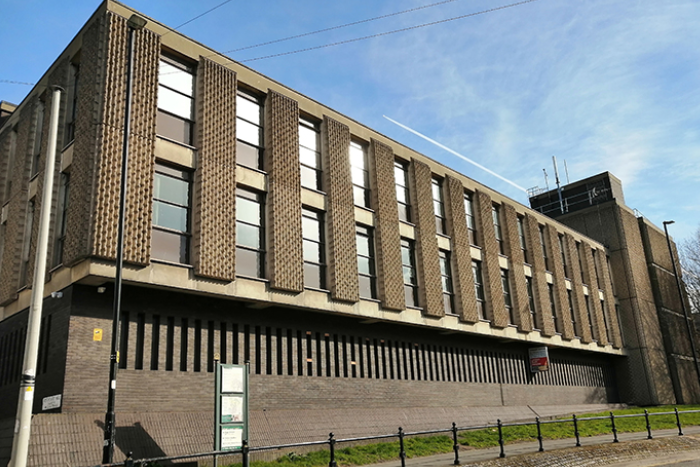
Brutalism on West Parade
Andrew Walker of The Survey of Lincoln considers a currently disused but distinctive building near the city centre.
Now looking for a new function, the building often known as ‘Ryvita House’ on West Parade was officially opened as Lincoln’s Divisional Police Headquarters by the Duchess of Kent on 1 October 1975.
Prior to its move there, the city’s police force was based in cramped premises in the Sessions House on a site in Monks Road that also for many years housed a fire station, which originally was operated by the police force. The move of the police from West Parade in November 2019 to the new Blue Light Hub on South Park brought together again the fire and police services, now also joined by ambulance provision.
Following the clearance of the former residential site to make way for the new structure at the junction of West Parade and Beaumont Fee, archaeological excavations at the western edge of the development unearthed a section of Roman city wall. This prompted the planned building to be moved slightly so that the remains could be explored, and subsequently left open, whilst construction work continued.
At its opening, one local newspaper article reported positively that the building was ‘a modern purpose-built centre that is both attractive and functional.’
Attention was paid to the facilities contained within the structure on its four floors, from the basement’s spacious parking bay and car-washing facilities to the top floor which housed a gym and 22 study bedrooms for police cadets and single officers.
The hillside location meant that three of the levels enabled ground-floor access. At the outset, the building was the base for 275 officers and 168 civilian personnel, with some favoured desks offering cathedral views, whilst others provided sight of the internal courtyard.
The building’s ‘ultra-modern’ technology included a video screen in the communications room, giving views of the back door through which prisoners were brought into the building, an internal public address facility, and a phone system which allowed officers to speak into a dictating machine recording verbal reports ready for secretarial staff to type up later. The eight cells for male prisoners and two for women comprised double the capacity at the Sessions House.
Plans for the £800,000 reinforced concrete-framed building were drawn up by the city’s Directorate of Planning and Architecture, headed by Percy Jackson.
Simons Construction won the contract to build it and construction work began in January 1973. The distinctive structure soon won the local nickname of ‘Ryvita House’ and when an application was made to it in December 1986, according to the Lincolnshire Echo, councillors’ fears were allayed by planners that it might lose some of its ‘crispbread consistency’.
The building has many of the characteristic features of the Brutalist architectural style, with its bare building materials – notably textured, unpainted concrete - and structural aspects highlighted with few decorative features.
Whilst Brutalist architecture quickly became unfashionable, with several prominent buildings of this type being demolished, such as the Tricorn Centre in Portsmouth and the ‘Get Carter’ multi-storey car park in Gateshead, more recently attempts have been made to restore and revive other examples such as Preston Bus Station and Sheffield’s Park Hill flats.
It would be shame if this characterful and unusual building fell into disrepair – even though there are many who might regard it as a ‘monstrous carbuncle’, including perhaps King Charles.
For more information about The Survey of Lincoln’s work, including its books on the city’s West End, see www.thesurveyoflincoln.co.uk
